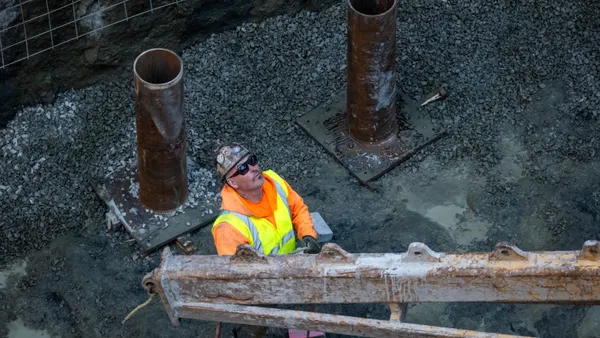Dive Brief:
-
U.S. Department of Transportation Secretary Elaine Chao told a group of transportation officials gathered at the White House on Wednesday that cities and states could earn a priority spot in line for federal money if they secure private investors for their infrastructure projects, according to Reuters.
-
The administration wants to motivate state and local governments to hand over more of their projects to the private sector as part of the president's expected $1 trillion infrastructure program.
-
Rural projects that lack big earning potential and initiatives that use new technology to build bridges, tunnels and ports remain prime candidates for direct federal funding.
Dive Insight:
The goal of this most recent White House meeting was to provide a venue for administration and transportation officials to hammer out different ways of funding infrastructure. That could help frame the discussion for lawmakers when Congress returns from its summer recess next week.
Details of the president's infrastructure plan have been released by White House officials in dribs and drabs since he campaigned on it last year. A final plan is expected sometime this fall.
Despite initial statements that state and local governments need to be more self-sufficient when planning their infrastructure projects — that is, finding non-federal financing sources — the Trump has said his eventual proposal would set aside $25 billion for rural projects. That's in line with statements made at the White House gathering this week.
Lawmakers could also expand the Transportation Infrastructure Finance and Innovation Act (TIFIA) loan program to include more rural projects after hearing testimony from recipients this summer. Those who benefited from the low-interest loans told a congressional panel that the federal government needed to do more outreach to rural communities and reduce loan fees, which could cost as much as $400,000.
If the president's 2018 budget request goes through as-is, the TIFIA program's subsidy could increase to $1 billion in the hopes of spurring $140 billion of infrastructure investment. However, as part of the same proposal, the president would slash grant initiatives like the Transportation Investment Generating Economic Recovery (TIGER) program and Capital Investment Grants (CIG). Overall, the USDOT would see a budget cut of 13%.











